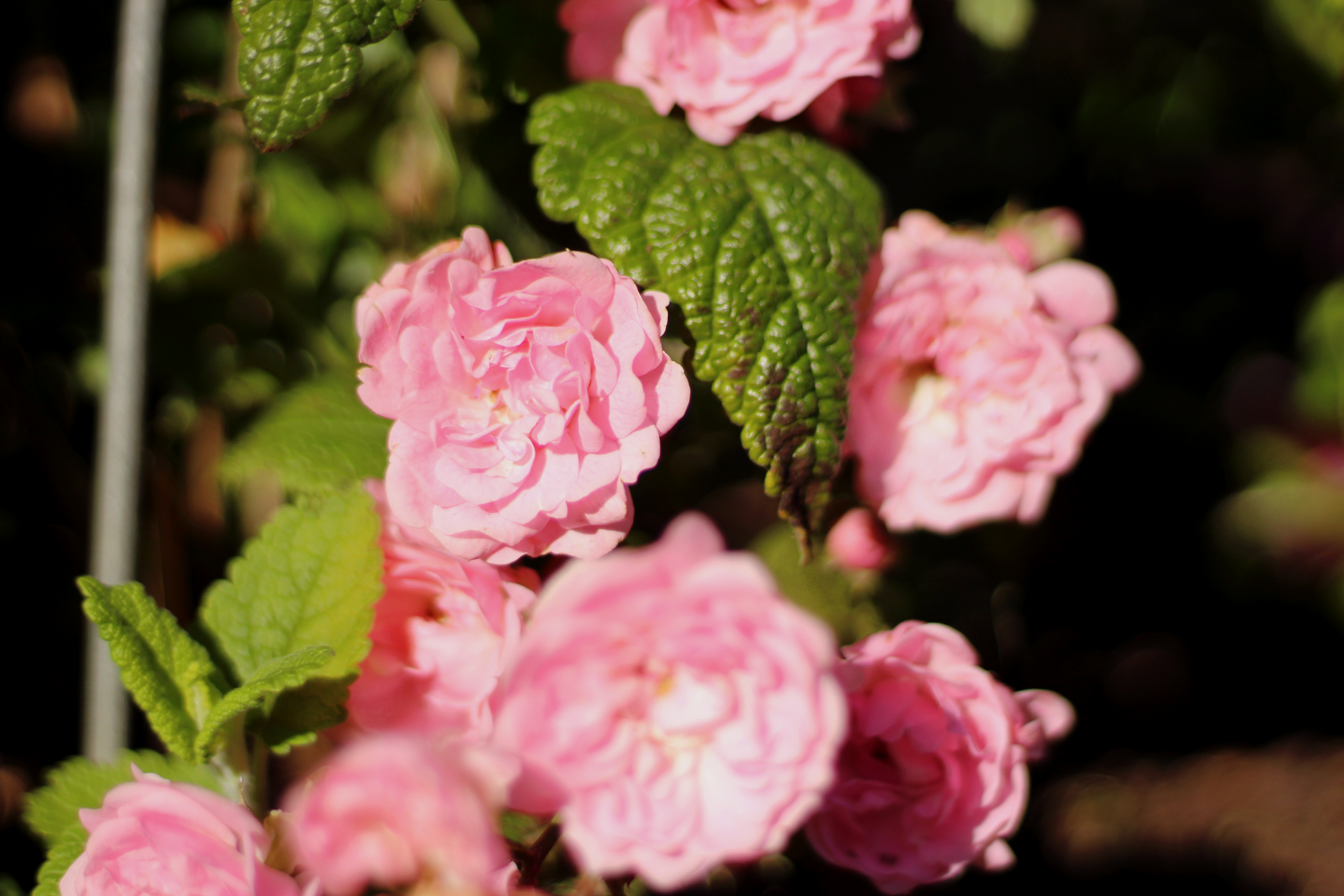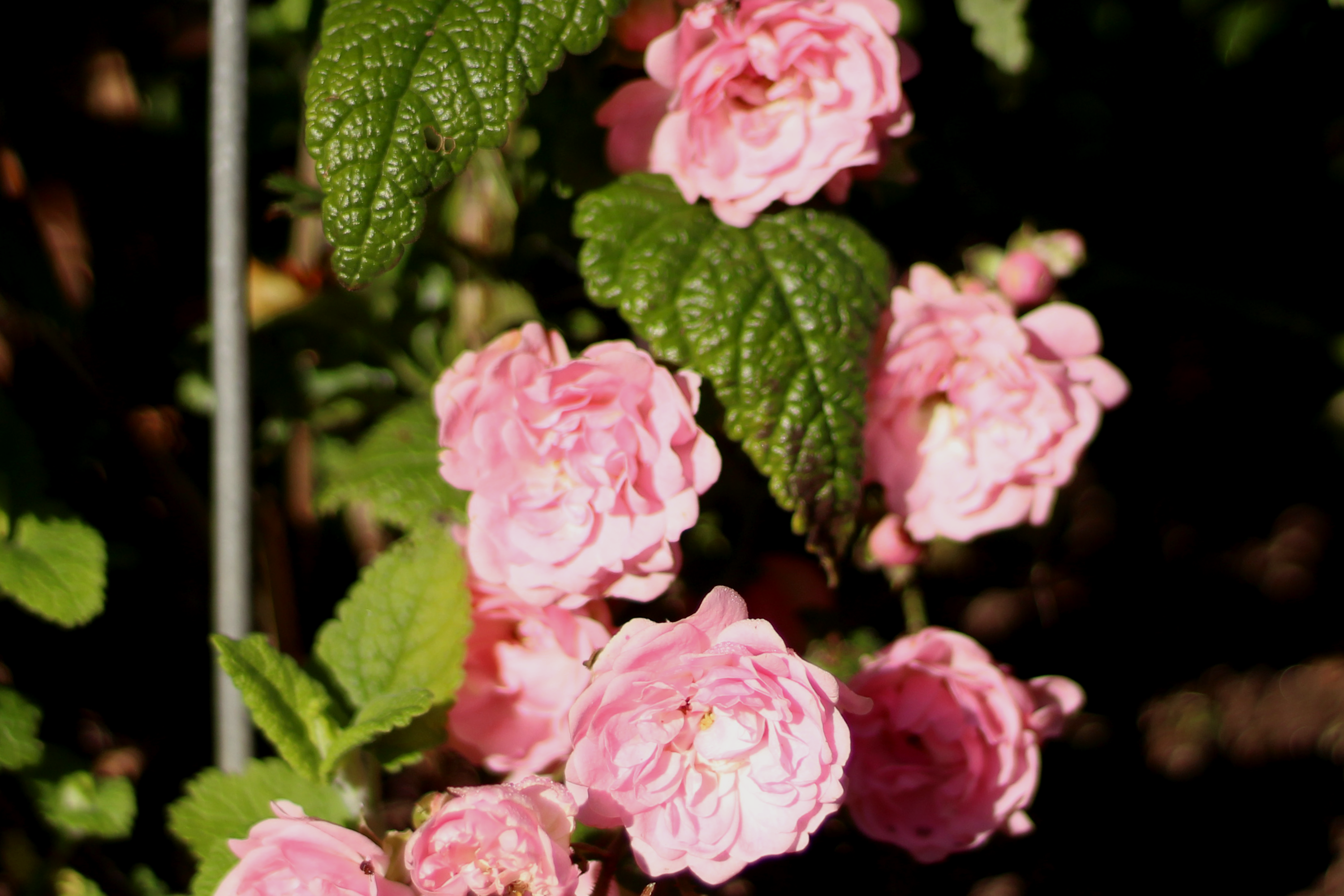Rosa 'The Fairy' (Poly)
Approx. 0.5 litre pot
About this cultivar:
Rosa 'The Fairy' (Poly) is likely the most popular Polyantha rose around. It is renowned for its dainty semi-double blooms that exude an irresistible allure and its dainty habit. Each blossom showcases soft pink petals with a hint of white at the centre, creating a captivating display. These charming flowers are held in generous clusters, adorning the plant with an abundance of blooms throughout the growing season. It starts a little later than most roses then will keep flowering until the first frosts.
This rose is proven! Introduced in 1932 by Ann & John Bentall of Brokenbacks Nursery, in the village of Havering-atte-Bower, Essex. It came from a Paul Crampel x Lady Gay cross. Most likely it was Ann who bred this, one of the most popualr roses in the world, but she is rarely credited!
One of the greatest strengths of Rosa 'The Fairy' lies in its versatility. This resilient shrub rose thrives in a variety of conditions, from full sun to partial shade, and adapts well to different soil types. Whether planted as a focal point in a garden bed, used as a border plant, or incorporated into mixed plantings.
It, unsurprisingly, has the Royal Horticultural Society Award of Garden Merit (RHS AGM).
- Position: Full sun, partial shade
- Soil: Almost any soil, grows well in Ballyrobert
- Flowers: June, July, August, September
- Other features: Scented, Great Ground Cover, Royal Horticultural Society Award of Garden Merit (RHS AGM)
- Hardiness: H6 - Hardy in all of UK and northern Europe (-20 to -15°C), Fully hardy, grows well in Ballyrobert
- Habit: Bushy
- Foliage: Deciduous
- Height: 30 - 60 cm (1 - 2 ft) prune to your liking
- Spread: 60 - 90 cm (2 - 3 ft) prune to your liking
- Time to full growth: 2 to 5 years
- Plant type: Shrub, rose
- Colour: Green, pink
- Goes well with: Aster, Geranium
About this genus:
Rosa is a woody perennial within the Rose family (Rosaceae). What is there to say? There are over 100 species and thousands of cultivars. They form a group of plants that can be erect shrubs, climbing or trailing with stems that are often armed with sharp prickles. Flowers vary in size and shape and are usually large and showy, in colours ranging from white through yellows and reds. Most species are native to Asia, with smaller numbers native to Europe, North America, and northwest Africa.
The name rose comes from French, itself from Latin rosa, which was perhaps borrowed from the Greek ródon. The ancient Greeks and Romans identified the rose with the goddess of love, Aphrodite (Greek name) and Venus (Roman name). In Rome a wild rose would be placed on the door of a room where secret or confidential matters were discussed. The phrase sub rosa, or "under the rose", means to keep a secret — derived from this ancient Roman practice.
The aggregate fruit of the rose is a berry-like structure called a rose hip. Rose hips are occasionally made into jam, jelly, marmalade, and soup or are brewed for tea, primarily for their high vitamin C content. They are also pressed and filtered to make rose hip syrup. Many Rosa cultivars do not produce hips, as the flowers are so tightly petalled that they do not provide access for pollination. Poor little bees. Rose perfumes are made from rose oil, which is a mixture of volatile essential oils obtained by steam distilling the crushed petals of roses. About two thousand flowers are required to produce one gram of oil! Rose petals also have a variety of culinary uses; from teas to salads and scones to ice creams
Ornamental roses have been cultivated for millennia, with the earliest known cultivation known to date from at least 500 BC in Mediterranean countries, Persia, and China. In the early 19th century the Empress Josephine of France patronized the development of rose breeding at her gardens at Malmaison. As long ago as 1840 a collection numbering over one thousand different cultivars was recorded at Abney Park in England.
As you may have guessed it is hard to be general about growing Roses. However, rest assured that all the roses we sell have been trialled and grown in our own wet clay soil garden at Ballyrobert in either full-sun or part-shade. We've chosen the ones that do best with us. Hopefully that should give you a bit of confidence or guidance!
We normally tie ramblers up walls or fences instead of climbers since ramblers are often more floriferous.




